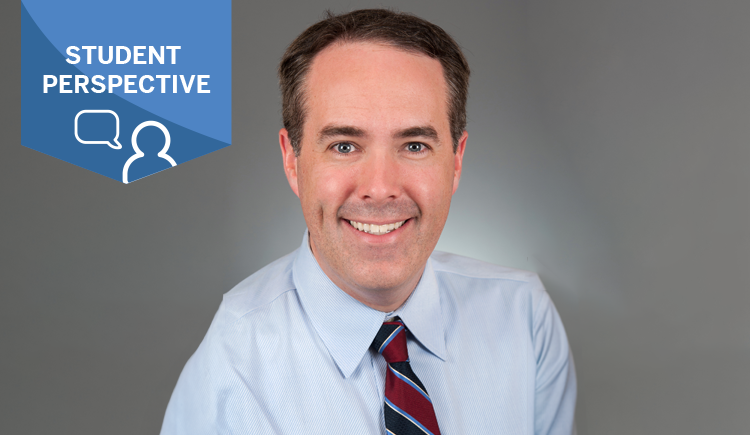
Information regarding COVID-19 has rapidly evolved. The content in this article provides a historical snapshot of events surrounding the date of posting.
Testing continues to be a debated component of the United States’ response to the COVID-19 pandemic. As part of our ongoing webinar series, Ajay K. Singh, MBBS, FRCP, MBA, senior associate dean for postgraduate medical education, Harvard Medical School spoke to experts in immunological testing, Eric Feigl-Ding, PhD, epidemiologist and health economist, Harvard Chan School of Public Health; and Michael Mina, MD, PhD, assistant professor of epidemiology and immunology and infectious diseases, Harvard T.H. Chan School of Public Health. The following article is an excerpt from this discussion recorded on April 16, 2020 that has been condensed and edited for clarity and accuracy.
As one of the first people who spoke about COVID-19 and the importance of developing a response, tell us about its current state and what you think still needs to be done, as this pandemic continues in the United States?
Feigl-Ding: When I first spoke about this coronavirus in January, most media outlets were not paying attention. We've obviously come a long way. In terms of public perception, there's still splintering. Right now, there is movement to reopen the United States as fast as we can, public health be damned. There's this big political divide, and I don't think the public is fully awakened. In certain ways, there is this enormous resistance against further lockdowns and mitigation. At the same time, we're not testing enough. As of a few minutes ago, the US completed 3.2 million tests. In some areas like New York, the percentage of tests done that are positive is around 30-40%. This number shows that we're not doing enough testing. We need to test when people first develop symptoms, and we're just not there yet.
There is much public pressure around testing. The idea that we're not testing enough, and yet, there is concern about the quality of available tests. From your immunological and public health perspective, what are your thoughts?
Mina: For the past three months, we’ve been working to scale Polymerase Chain Reaction (PCR) testing and diagnostics. This is how we’ve been clinically diagnosing people with the virus. Now, we are beginning another type of testing, called serological testing. These tests look for antibodies, which are essentially the immune system’s memory of the virus. This will allow us to gauge how many people have been exposed to this coronavirus.
Serology testing is a powerful public health tool. We currently don't know if less than 1% of the population has been infected or if 20% has been infected. It's probably somewhere in between, and more likely on the higher end, despite the diagnostic test results being so low because their availability has been limited.
Antibody-based testing is going to change the decisions we make moving forward. However, like the PCR tests, we're going to see supply chain problems in getting these tests available to people. We'll have to allocate them wisely as the demand to be tested is going to be quite extraordinary. We'll have to figure out how to triage people appropriately to best serve public health.
Let me push you on that point a little. In the US, there are approximately 95 serological tests available with three tests approved by the FDA. Yet, there is concern not only about supply chain issues, but about test accuracy. Can you shed some light on that?
Mina: There are questions surrounding both the accuracy and the interpretation of testing. The world is flooded with point-of-care tests. I call them the pregnancy test model; little plastic tests that give a plus or a minus sign. For testing antibodies, these types of tests are okay.
But, we're generally finding that many of the tests developed in other places in the world aren't as accurate as we might have hoped. As a pathologist who develops laboratory diagnostics, these tests lack both specificities, meaning they might give somebody a positive when they weren't actually positive, and they lack sensitivity, meaning they might miss people who are positive.
We have to really be cautious about which tests we're using. There are large research groups now trying to sift through over 90 tests. We are starting to see rise of laboratory diagnostics, private companies, and academic groups developing high sensitivity and high specificity tests. These kinds of tests are made from companies with global reach like Roche and Abbott. These tests are going to be more accurate, more regulated, and will have better quality control.
Once we have a small number of really good, scalable tests, we need to consider how we will interpret them. There is hope pinned on the idea that if you test positive, you can immediately go back into society without risk to yourself or of infecting somebody else. We anticipate that for people who become infected with the virus, for at least for some duration of time, it will lead to some immunological memory and protection. Yet, we don't know if previously infected people can be vectors for transmission. We need to understand this before we can discuss sending people back to work.
Given the current challenges to testing, do you think the United States is ready to re-open? How would you do it?
Feigl-Ding: As I mentioned, we need sufficient PCR and immunological antibody testing, which I'm very hopeful that we'll get perfected soon. This then becomes a political question as our public health departments are not equipped to complete contact tracing at a high volume. This is why mobile contact tracing applications are key. Obviously, there are privacy concerns, but with Bluetooth-based technology, it is possible to maintain privacy. For example, South Korea’s contact tracing app deletes all data within one or two months after initial contact.
With testing, contact tracing, and the quarantine that comes with it, we need to complete many risk profiles, not only for people with heart disease and diabetes, but for other factors such as hypertension, obesity, or any lung disease. We need to not only factor in age but create a swarm scoring algorithm where we release people based on their health risk score.
The issues then become who determines the health risk score, how it will be implemented and how will it be enforced. In the middle of this fog of war, it's too early to talk about the specifics of reopening without these basic scientific questions answered. Many groups are working on it, but the political pressure is on. We should listen to scientists, but we need to appease as much of the political winds as possible; it’s a difficult balance as we should always put public health first.
Let me ask you about serological tests. I would imagine at a very basic level that you would divide people by immunity. But what does immunity actually mean? Could you discuss the concept of whether you're truly immune to this?
Mina: There are different types of immunity that form after somebody becomes infected with a virus or becomes vaccinated. Some we call sterilizing immunity, or very neutralizing immunity, meaning that if you come in contact with the virus, your body immediately neutralizes it, and you don't become infected at all. For example, if somebody gets measles once, they generally don't ever get it again.
On the other hand, there are other viruses like adenoviruses and coronaviruses where we don't believe they lead to full sterilizing immunity. The flu has been the most famous of these, as it’s only a partial immunity and people can get the flu multiple times. We have scientists trying to understand why some viruses lead to waning immunity while others lead to lifelong immunity. It's still not clear if people who don't develop immunological antibodies are truly not immune.
The immune system has a lot of redundancy. There is a whole other world of the immune system that's harder to measure, we don't use it a lot for public health efforts. It's called cellular immunity; these are T-cells. They are actually the workhorses of our immune system that destroy pathogens inside of our body. Some people who don't have a good antibody response, actually have a very good T-cell response, so they might still be protected.
We don't believe this is an extraordinary virus. From an immunological standpoint, it's probably a virus that exists like its relatives, the other seasonal coronaviruses. After people are exposed to the virus, they're probably going to create some good durable level of immunity. However, they will probably be able to get asymptomatic or mildly symptomatic infections in the future.
The point is immunity is on a whole wide scale. We want to ensure we get quantitative tests available to do studies so that we can evaluate the correlates of protection.
Every year, many people get a cold from presumably a coronavirus. Then, six months to a year later, the same individuals get another common cold. If there was a robust immune response to this type of coronavirus, there would be an antibody response that would give some enduring immunity, but it doesn't occur. What's the likelihood that a vaccine could be developed that could result in enduring immunity?
Mina: This is an extraordinarily important question. One that needs clarification because a lot of people are essentially planning on the idea that a vaccine will be available in 12 to 15 months. I certainly hope a vaccine will become available in a year; that would be a super accelerated pathway to get a vaccine.
In the current climate, we can accelerate some of this effort. But, those timeframes are based entirely on the idea that the biology works. We don't yet know if people are going to develop long-term and robust responses to a vaccine. It could even backfire. We know that these things can go awry.
However, there are some clever tricks that we can do with vaccines to help coerce the immune system to have a more powerful response. But there are a lot of ‘ifs’ there. The only viruses that we have good vaccines for are those that lead to lifelong sterilizing immunity, such as polio, smallpox, measles, rubella, and mumps. We've been trying tremendously hard as a scientific body to develop rhinovirus or adenovirus vaccines, and we have not yet succeeded. These viruses are a little bit trickier. I'm not holding my breath for a vaccine, but I will be hopeful.
From the science perspective, what needs to happen to mitigate the effect of this curve?
Feigl-Ding: We need to understand the extent of people this virus has infected. We're in the phase now where we're going to start learning the true prevalence. It might mean that this virus transmits much more readily. If 45 million people in the US have been infected, that means it spreads very quickly. I want to emphasize that is a very good thing. It would mean that the hospitals are overrun not because this is an extraordinarily deadly virus but because a massive group of people have actually gotten infected. In a few more weeks, we'll start to have a much better picture of the true prevalence with serological testing.
We need to use our resources to ensure the safety of the most vulnerable people. If we can somehow assure some level of safety or scrutiny to keep vulnerable populations protected; we can think about getting the majority of people back into the workforce.
However, we could be on the other extreme. That's why we need to learn the true prevalence before we can start making any decisions.
-
Featured Panelists
- Ajay K. Singh, MBBS, FRCP, MBA, senior associate dean for postgraduate medical education
- Eric Feigl-Ding, PhD, epidemiologist and health economist, Harvard Chan School of Public Health
- Michael Mina, MD, PhD, assistant professor of epidemiology and immunology and infectious diseases, Harvard T.H. Chan School of Public Health


